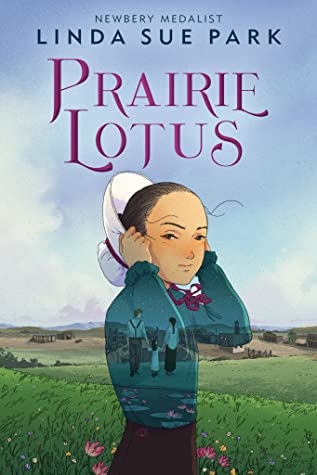Book Review: Prairie Lotus

Last night, Linda Sue Park was one of many wonderful speakers at the KidLit Rally 4 Black Lives, which was created by Kwame Alexander, Jacqueline Woodson, and Jason Reynolds. Having recently read Park’s latest book, Prairie Lotus (delivered to my apartment by the lovely Books Are Magic) it was so powerful to see her speak about the way Asians, especially East-Asians, can use the “power of white adjacency” to speak up to white people about racism against black people. Read on for my review of Prairie Lotus, and then, if you missed the rally, you can watch the entire event here: https://www.facebook.com/watch/?v=248795633092755.
Prairie Lotus takes place in Dakota Territory around 1880. Hanna, who is half-Chinese, and her father arrive in the town of LaForge, where they are hoping for a new start. Hannah dreams of a pleasant life, graduating from school, and eventually becoming a dressmaker, but racism from the townspeople remind her that most white people don’t want non-white neighbors. Still, Hanna is determined to call LaForge a home and won’t let prejudice from her peers stop her.
In the author’s note, Park explains how writing this book was an “attempt to reconcile my childhood love of the Little House books with my adult knowledge of their painful shortcomings.” While Little House cannot be sutured from its racist depictions of indigenous people, Park’s Prairie Lotus treats the Sioux women with respect. Prairie Lotus produces a broader, truer picture of what life was actually like in the nineteenth century and maintains the soothing pace and fascinating details about life at that time, such as making ginger shrub instead of lemonade.
Prairie Lotus is full of immersive everyday details. When I read about the precision of dressmaking (with a particularly vivid look at buttons), I could almost see the buttons clinking in my own hand. In the paragraph or two on sieving flour, I could taste the food being made. When I flipped to the last page, I felt satisfied but strangely sad. I wanted to continue lounging around in my pajamas, reading about Hanna. I’m hopeful. There are countless Little House books that exist, so perhaps we’ll get to see more of Hanna’s life as well.
Disclosure: I am an affiliate of Bookshop.org and I will earn a commission if you click through and make a purchase.
